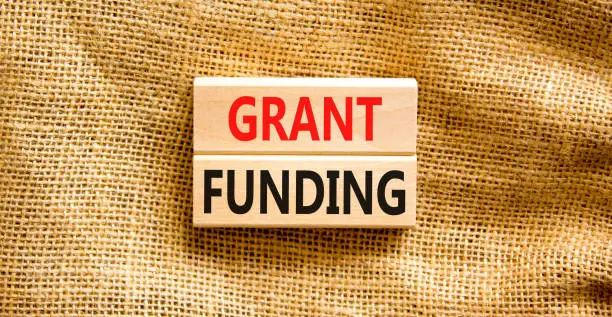How to Apply for Grants for Outreach Programs
Imagine you have a vision – a project that could light up your community, address an urgent need, or simply bring a little more joy into people’s lives. The challenge? Bringing that vision to life often requires more than passion and hard work; it needs funding. That’s where the journey of applying for outreach grants begins.
Let’s start at the very beginning: finding the right grant. This is like a treasure hunt, except your map is the internet, and the treasure is funding. There are countless grants out there, each with its focus, application process, and requirements. Your job is to find the one that aligns with your project. Websites like Grants.gov or Foundation Center are great places to start. But don’t overlook local resources – sometimes the grants closest to home are the best fit for community-based projects.
Found a grant that seems like a match? Excellent! Now it’s time to dive into the application process, and this is where things get serious. Grant applications are not just forms to fill out; they’re an opportunity to tell your story. Start with a clear, concise description of your project. What is it? Who will it help? How will it make a difference? Remember, the people reading your application probably review dozens, if not hundreds, of others. Make yours stand out with a compelling narrative.
But a great story isn’t enough. You need to back it up with
solid data and a well-thought-out plan. This means doing your homework. What are the specific needs in your community that your project addresses? Are there statistics or studies you can cite? Showing that you understand the problem and have a realistic plan to tackle it is crucial.
Now, let’s talk about the backbone of any grant application: the budget. This can be intimidating, but it’s simply a detailed plan of how you’ll use the funds. Be realistic and transparent. Itemize your expenses, explain why each cost is necessary, and show how each dollar will be used to achieve your project’s goals. Remember, funders want to know that their money will be used wisely and effectively.
Crafting a winning grant proposal also means paying attention to the finer details. Each grant has its own guidelines – deadlines, formats, required documents. Missing a small detail can mean the difference between acceptance and rejection. So, double-check, then triple-check your application. And adhere to their guidelines meticulously. This shows that you’re serious and respectful of the process.
The heart of your application is impact. Funders want to see that their investment will lead to meaningful change. Set clear, measurable goals for your project. How many people will it help? What change do you hope to see? Being specific about the impact makes your application more compelling and helps funders understand the value of your project.
Collaboration can also be a game-changer. Partnerships with other organizations or community groups can strengthen your application. It shows that you have the support and resources to make your project a success. Plus, it demonstrates a spirit of community and cooperation, which is often important to funders.
Now, the waiting game begins. It can take weeks or months to hear back about your application. Use this time wisely. Continue to refine your project plan, build community support, or even look for other funding sources. Don’t put all your eggs in one basket – apply for multiple grants if possible.
But what if you get that dreaded rejection letter? It’s not the end of the world, though it can feel like it. Take a moment to regroup, then reach out to the funder. Ask for feedback. Why was your application rejected? Use this as a learning experience. Every rejection is an opportunity to improve your next application.
Remember, applying for grants is not just a bureaucratic exercise; it’s a journey towards making your vision a reality. It requires patience, persistence, and a lot of hard work. But the reward – seeing your project come to life and make a difference in your community – is worth every effort.
Identifying Potential Funding Sources
Imagine you’re planning a road trip. You have your destination (your project), and you’ve packed your bags (your plan), but you need fuel to get there. In the world of outreach projects, your fuel is funding, and the first step is to find out where you can fill up your tank.
Identifying potential funding sources is like being a detective. You’re looking for clues, following leads, and ultimately uncovering the resources that align with your mission. Start by asking yourself: Who would be interested in my project? If you’re focusing on education, look for organizations passionate about learning. If it’s about health, find those who prioritize well-being.
The internet is your best friend here. Use databases like Grants.gov, the Foundation Center, or even Google. Don’t overlook local foundations, businesses, and government programs. Sometimes, the best opportunities are in your own backyard. Networking can also be a goldmine. Attend community events, workshops, and seminars. Talk to people. You never know who might point you in the right direction.
Key Components of a Successful Application
Now that you’ve found some potential sources, it’s time to make your case. Think of your grant application as a job interview. You need to present yourself and your project in the best light possible.
First, clarity is king. Your application should clearly articulate what your project is, why it’s needed, and how it will make a difference. Be specific. Vague ideas don’t inspire confidence.
Next, your goals should be SMART: Specific, Measurable, Achievable, Relevant, and Time-bound. This framework not only structures your project effectively but also assures funders that you have a solid plan in place.
Don’t forget about your budget. This is where you show that you’re not just a dreamer, but also a doer. Detail every cost, justify it, and demonstrate that you can manage funds responsibly.
Lastly, your application should tell a story. Yes, numbers and facts are important, but so is the human element. Share the story behind your project. Why does it matter to you? Why should it matter to others? A compelling narrative can make your application memorable.
Common Challenges and Tips for Overcoming Them
Applying for grants isn’t a walk in the park. There are bumps along the road. One common challenge is the fierce competition. Remember, you’re not the only one seeking funding. To stand out, tailor your application to each funder. Show them why your project aligns perfectly with their objectives.
Another challenge is navigating the complex requirements of each grant. It can feel like a maze. The key here is attention to detail. Read the guidelines thoroughly, prepare all the required documents, and adhere to the specified format. When in doubt, don’t hesitate to contact the funding organization for clarification.
Then there’s the waiting game. Waiting to hear back can be nerve-wracking. Use this time productively. Continue refining your project, gather more data, or even start working on other grant applications.
And let’s face it, rejection is part of the process. It’s not pleasant, but it’s not the end either. Use rejections as learning opportunities. Ask for feedback, learn from it, and apply those lessons to your next application.
Managing and Utilizing Grants Effectively
You’ve done it. After the meticulous planning, the detailed applications, and the anxious waiting, you’ve secured a grant for your outreach program. Congratulations! But wait, the journey doesn’t end here; in fact, a new chapter begins – managing and utilizing your grant effectively. This is where the real work starts, and it’s crucial to ensure your project not only survives but thrives.
First, let’s talk about setting up a system for financial management. Think of this as building the foundation of a house. It needs to be strong and reliable. Keeping track of how every dollar is spent is not just good practice; it’s essential. This means setting up a budget, sticking to it, and keeping detailed records. Software tools can be your allies here, helping you track expenses and manage funds efficiently.
Now, with the funds in hand, it’s time to put your plan into action. But remember, sticking to your original proposal is key. This is what the grantors funded, and deviating from it can lead to complications, or worse, losing the grant. If you do encounter unforeseen circumstances that require a change in plan, communicate with your grantor. Transparency is crucial.
Effective grant management also involves regular reporting. This isn’t just a bureaucratic requirement; it’s an opportunity to showcase your progress. Use these reports to demonstrate what you’ve achieved, how the funds are being used, and the impact your project is making. Stories and testimonials can be powerful here – they put a face to the numbers and make the impact of your work feel real.
One aspect often overlooked in grant management is building a relationship with your grantor. You’re not just receiving funds from them; you’re entering into a partnership. Keep them updated, share successes, and even challenges. This can open doors for future support and collaboration.
Let’s talk about measuring success. How do you know if your project is making a difference? Setting up metrics for success at the beginning is essential. These could be quantitative, like the number of people served, or qualitative, like feedback from the community. Regularly evaluating your project against these metrics not only helps you track progress but also guides you in making necessary adjustments.
But managing a grant isn’t just about the here and now; it’s about looking ahead. Sustainability is a word you’ll hear often in the world of outreach programs, and for good reason. Your project might be funded now, but what about when the grant period ends? Start thinking about this early. Look for ways to make your project self-sustaining, whether it’s through community support, partnerships, or other funding sources.
Another key element in effective grant management is team coordination. Whether you have a staff of two or twenty, clear communication and defined roles are vital. Everyone should know what’s expected of them and how their work contributes to the project’s goals. Regular team meetings and updates can help keep everyone on the same page and maintain momentum.
Flexibility is also essential. No matter how well you plan, unexpected challenges will arise. Being able to adapt and respond to these challenges is crucial. This might mean tweaking your approach, reallocating resources, or even seeking additional support. The ability to pivot can be the difference between a struggling project and a successful one.
Don’t forget about the power of community engagement. Your project is designed to benefit the community, so involve them as much as possible. Their feedback can provide invaluable insights into how your project is doing and what can be improved. Plus, engaging the community helps build a sense of ownership and investment in the project, which can be crucial for its long-term success.
Lastly, share your story. This isn’t just about reporting to your grantor; it’s about sharing your successes and lessons learned with the wider world. Whether it’s through social media, local media, or conferences, getting the word out about your work can inspire others, attract new supporters, and build credibility for your organization.
Best Practices for Grant Management
So, you’ve landed that grant, and now it’s time to make the most of it. Think of grant management as steering a ship – you need to keep it on course, maintain it well, and respond to changing conditions. Here are some best practices:
- Stay Organized: This is the captain’s log of your ship. Keep meticulous records of everything – expenses, correspondence with grantors, and project progress. Tools like grant management software can be a lifesaver here.
- Adhere to the Budget: Your budget is your map. Stick to it as closely as possible. If you do need to make changes, document why and how, and communicate with your grantor.
- Communicate Effectively: Regular, clear communication with your team and grantors is key. Keep everyone in the loop about project progress and any issues that arise.
- Follow the Rules: Each grant comes with its own set of guidelines and requirements. Make sure you understand these and comply with them to the letter.
- Evaluate and Adapt: Be prepared to assess how things are going and make adjustments as needed. Flexibility can be just as important as sticking to the plan.
Measuring and Reporting Program Impact
Measuring impact is like taking the pulse of your project. It tells you if the project is healthy and making the desired difference. Here’s how to do it effectively:
- Define Clear Metrics: Before you start, decide how you’ll measure success. Will it be the number of people served, the improvement in a specific metric, or something else?
- Collect Data Rigorously: Gather data consistently and accurately. This can be through surveys, interviews, or other methods, depending on what you’re measuring.
- Analyze and Reflect: Regularly review the data to see what it’s telling you. Are you meeting your goals? What can be improved?
- Report Honestly: When reporting to your grantor, be transparent about both successes and challenges. This honesty can build trust and lead to more support in the future.
Future Funding Considerations
Securing a grant is fantastic, but what happens when the funding period ends? Here are some tips for keeping the momentum going:
- Plan for Sustainability: From day one, think about how your project will continue after the grant ends. Can you develop revenue-generating activities, or will you rely on ongoing donations?
- Build Strong Relationships: Foster relationships with your current grantor and other potential funders. Networking can open doors to new funding opportunities.
- Document Everything: A well-documented project can be a powerful tool in securing future funding. Show potential funders what you’ve achieved and how you’ve managed resources effectively.
- Stay Visible: Keep your project in the public eye. Use social media, local news, and community events to showcase your work and its impact.
- Be Proactive: Don’t wait until your funding is about to run out to look for more. Start exploring new grant opportunities well in advance.
Conclusion
As we wrap up our exploration of grants for outreach programs, it’s clear that these grants are more than just financial support—they’re catalysts for change and innovation in our communities. From understanding the intricacies of grant applications to effectively managing and utilizing funds, every step is an integral part of a journey towards meaningful impact.
Securing a grant is a testament to your commitment and the potential of your vision. It’s an acknowledgment that your idea has the power to make a difference. However, the true challenge—and opportunity—lies in what comes next. Effective management of these resources, careful planning, and a commitment to measuring and reporting your impact are crucial to turning your vision into a tangible reality.
The journey of working with grants is also one of learning and growth. It teaches resilience, adaptability, and the importance of strong community ties. Whether you’re celebrating the success of a well-implemented program or learning from the challenges encountered along the way, each experience is a stepping stone towards greater understanding and efficiency.
Looking ahead, the landscape of outreach programs and grants will continue to evolve, shaped by emerging needs and new understandings of how to serve communities best. What remains constant is the need for passionate individuals and organizations ready to take up the mantle of change-makers, armed with innovative ideas and the determination to see them through.
So, as you embark on or continue your journey with outreach program grants, remember that it’s about more than just securing funding—it’s about being a part of a larger movement towards a more engaged, empowered, and equitable society. Your efforts, insights, and successes contribute to this collective endeavor, driving forward the transformative power of outreach initiatives.
In essence, grants for outreach programs are more than financial endowments; they are investments in hope, growth, and community betterment. And as stewards of these resources, you play a vital role in crafting a brighter, more inclusive future for all.
To further enhance your grant writing skills and stay on top of these trends, consider diving into some insightful literature.
Here are a few recommended books:
- The Ultimate Guide to Federal Grant Applications: Techniques for Success – This book is a must-read for anyone looking to navigate the complex world of federal grant applications. It offers practical techniques, insider tips, and a comprehensive understanding of what it takes to create successful federal grant applications.
- Advanced Grant Writing for Nonprofits : Focuses on sophisticated techniques for experienced grant writers. It delves into complex aspects of proposal development, offering strategies for dealing with competitive grant environments and large funding bodies.
- Mastering Grant Writing: A Nonprofit’s Guide to Effective Proposal Development and Submission: This book serves as a comprehensive guide, covering the entire process of grant writing. It includes tips on understanding funders’ perspectives, crafting compelling narratives, and the nuances of proposal submission.
- Becoming the Grant Guru: Freelancer’s Guide to Success : Tailored for freelance grant writers, this book provides insights into building a successful career in grant writing. It includes strategies for finding clients, managing projects, and maximizing the impact of grant proposals.
- The Small Business’s Guide to Winning Grants : This resource is particularly useful for small businesses looking to secure grants. It offers practical advice on identifying suitable grant opportunities, understanding the requirements of small business grants, and crafting winning proposals.
- Grant Readiness Guide: Preparing to Triumph in Funding Opportunities : A comprehensive resource for organizations at various stages of grant preparedness. It provides a roadmap for developing organizational capacity, aligning projects with funders’ goals, and creating compelling applications.
- Her Capital: Unlocking Women’s Small Business Grants: Specifically designed for women entrepreneurs, this book offers guidance on navigating the landscape of small business grants for women. It includes insights into grant sources, application strategies, and tips for leveraging grants to grow a business.
Join our email list now for exclusive grant-writing tips and unique grant opportunities delivered straight to your inbox. Click here to Subscribe. Don’t miss out!




